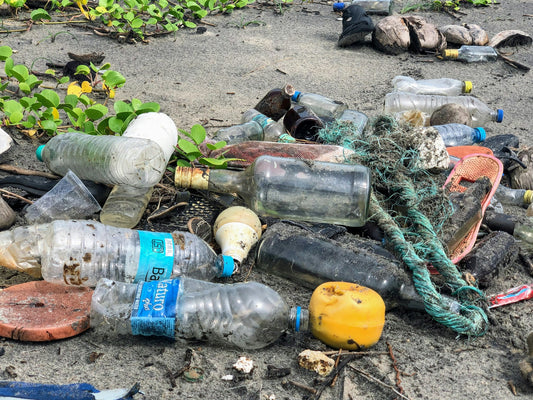Share
Adapting to climate change is no longer just a buzzword; it's a necessity for communities and businesses alike! As we face increasing climate impacts, the need for climate adaptation and climate resilience has never been more pressing. While our first priority should be slowing down climate change, we need strategies that can help us all thrive in this changing environment.
What is Climate Adaptation?
Climate Adaptation refers to the specific actions and processes that individuals, communities, and organizations undertake to adjust to the actual or expected impacts of climate change. This can include measures like building sea walls to protect against rising sea levels, changing agricultural practices to suit new weather patterns, or implementing water conservation techniques during droughts. Essentially, adaptation is about making changes to reduce vulnerability and enhance the ability to cope with climate impacts.
What is Climate Resilience?
Climate Resilience, on the other hand, describes the broader capacity of systems—be they social, economic, or ecological—to anticipate, prepare for, respond to, and recover from adverse climate events. Resilience emphasizes not just surviving shocks but thriving in their aftermath. It involves a systematic long-term approach that includes absorbing changes and reorganizing effectively when disturbances occur.
Let's explore some real-life strategies for climate adaptation and resilience.
Key Strategies for Climate Adaptation and Resilience

1. Building Resilient Infrastructure
Governments and organizations must invest in infrastructure that can withstand extreme weather events. This includes designing buildings with materials that resist flooding and high winds, and ensuring critical services like power and water are safeguarded against disruptions
Example - the City of Chicago: In response to urban flooding and heat islands, Chicago has developed extensive green infrastructure projects. These include creating green roofs, planting trees in urban areas, and implementing storm water management plans that increase rainwater absorption. Such initiatives not only mitigate flooding but also improve air quality and enhance community well-being .
2. Revising Land Use Plans
Adapting land use policies is essential for reducing vulnerability. This involves protecting critical ecosystems, avoiding construction in high-risk areas, and implementing zoning laws that account for future climate scenarios
Example - Mangrove Restoration in Indonesia
In Demak district, northern Java, local communities have collaborated to restore a 20-km coastal mangrove belt. This participatory planning approach has improved coastal protection against flooding and enhanced aquaculture productivity for around 70,000 residents while also contributing to carbon storage and biodiversity
3. Enhancing Agricultural Practices
Agriculture is particularly susceptible to climate change. Strategies such as diversifying crops, adopting drought-resistant varieties, and implementing sustainable farming practices can help farmers adapt to changing weather patterns
Example - Clover Cropping
In various regions across the United States, farmers plant clover during off-seasons, which not only prevents soil erosion but also enriches the ground with essential nutrients. Research has shown that using clover as a cover crop can significantly enhance soil fertility and structure while reducing weed pressure and improving overall crop yields in subsequent seasons
4. Improving Water Management
As water scarcity becomes more prevalent, efficient water management systems are crucial. This includes investing in rainwater harvesting systems, improving irrigation efficiency, and restoring wetlands to enhance natural water filtration and storage capabilities.
Example - SMART Tunnel in Malaysia
The Stormwater Management and Road Tunnel (SMART) in Kuala Lumpur serves dual purposes: it facilitates traffic flow while managing stormwater to prevent flooding. By allowing stormwater to be redirected through the tunnel during heavy rains, this infrastructure is expected to prevent over $1.5 billion in flood damage over its lifespan
5. Developing Early Warning Systems
Effective disaster preparedness relies on timely information. Establishing robust early warning systems can significantly reduce the impact of extreme weather events by ensuring communities are prepared for floods, hurricanes, or heatwaves
Example - Heat Warning Systems in Germany
In Kassel, Germany, authorities have established heat warning hotlines for elderly residents during heat waves. These systems provide critical information on staying cool and healthy, ensuring that vulnerable populations are protected during extreme weather events.
6. Promoting Public Health Initiatives
Climate change poses significant health risks, including heat-related illnesses and vector-borne diseases. Public health strategies should focus on enhancing community resilience through education, access to healthcare, and emergency response planning.
National Heat Strategy implemented by the United States through the National Integrated Heat Health Information System (NIHHIS) aims to protect vulnerable populations from the adverse effects of extreme heat, ultimately improving community resilience against climate impacts.
7. Community Engagement and Education
Engaging local communities in adaptation efforts is vital. Educational programs can empower residents by providing knowledge about climate risks and encouraging sustainable practices at the individual level
Example - Community Housing in the Philippines
After Typhoon Ondoy devastated informal settlements along the Manggahan Floodway in 2009, affected residents worked with decision-makers to design climate-resilient homes. These homes incorporate disaster-resistant materials and elevated water tanks, providing safer living conditions for families at risk from future typhoons.
8. Financial Support Mechanisms
To facilitate adaptation efforts, financial instruments such as insurance schemes, grants, and loans can provide necessary resources for vulnerable populations to invest in resilience measures.
Example - Ethiopia’s Productive Safety Net Program
This program provides cash and food aid to families affected by droughts and floods while requiring participation in local productivity-enhancing initiatives. Beneficiaries experience a smaller drop in consumption during crises compared to non-participants, demonstrating how financial support can bolster resilience against climate impacts
The Road Ahead
As we navigate this journey of climate adaptation, it’s essential to remember that every little bit helps! Whether you’re part of a community or a business, taking proactive steps today can lead to a brighter, more resilient tomorrow. By embracing strategies that foster both climate resilience and community spirit, we can turn challenges into opportunities—making our world not just survivable but thriving amidst the changes ahead! So let’s roll up our sleeves!








